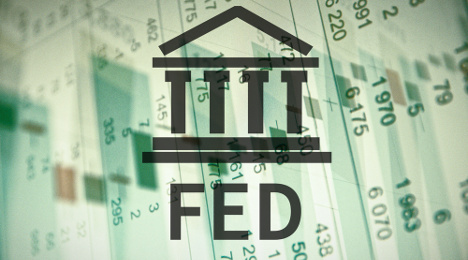What might ‘seal the deal’ for next interest rate hike

Stifel Nicolaus chief economist Lindsey Piegza and Comerica Bank chief economist Robert Dye each examined the comprehensive commentary offered by Federal Reserve chair Janet Yellen regarding the possibility of another interest rate move arriving next week.
After taking in what Yellen said during her speech at The Executives' Club of Chicago last week, Dye thinks he spotted the metric that “would seal the deal” when the Federal Open Market Committee (FOMC) holds its next regularly scheduled meeting next Tuesday and Wednesday.
First, here’s what Yellen discussed. She reviewed the Fed’s monetary policy going back 10 years since the Great Recession gripped the economy.
“Although the Federal Reserve's policy strategy for systematically pursuing its congressionally mandated goals of maximum employment and price stability has not changed during this period, the Federal Open Market Committee (FOMC) has made significant tactical adjustments along the way,” Yellen said. She then called 2014 “a turning point, when the FOMC began to transition from providing increasing amounts of accommodation to gradually scaling it back.”
Yellen acknowledged that modifying interest rates — that accommodation — has moved “at a slower pace” than most FOMC participants anticipated three years ago. She touched on a pair of reasons why.
“Both unexpected economic developments and deeper reevaluations of structural trends affecting the U.S. and global economies prompted us to reassess our views on the outlook and associated risks and, consequently, the appropriate stance of monetary policy, both in the near term and the longer run,” Yellen said.
“Looking ahead, we continue to expect the evolution of the economy to warrant further gradual increases in the target range for the federal funds rate,” she continued. “However, given how close we are to meeting our statutory goals, and in the absence of new developments that might materially worsen the economic outlook, the process of scaling back accommodation likely will not be as slow as it was in 2015 and 2016.”
After going into a wide array of monetary policy explanations during her prepared remarks that are available here, Yellen closed by emphasizing the Fed must remain “squarely focused on our congressionally mandated goals.
“The economy has essentially met the employment portion of our mandate and inflation is moving closer to our 2 percent objective. This outcome suggests that our goal-focused, outlook-dependent approach to scaling back accommodation over the past couple of years has served the U.S. economy well,” she continued.
“This same approach will continue to drive our policy decisions in the months and years ahead. With that in mind, our policy aims to support continued growth of the American economy in pursuit of our congressionally mandated objectives. We do that, as I have noted, with an eye always on the risks,” Yellen went on to say.
“To that end, we realize that waiting too long to scale back some of our support could potentially require us to raise rates rapidly sometime down the road, which in turn could risk disrupting financial markets and pushing the economy into recession. Having said that, I currently see no evidence that the Federal Reserve has fallen behind the curve, and I therefore continue to have confidence in our judgment that a gradual removal of accommodation is likely to be appropriate,” she added.
Yellen’s parting thought was, “As I have noted, unless unanticipated developments adversely affect the economic outlook, the process of scaling back accommodation likely will not be as slow as it was during the past couple of years.”
Piegza digested what the Fed chair offered her examination, mixing in President Trump’s address to a joint session of Congress that articulated his objectives.
“Amid still-tepid economic data suggesting little additional momentum in the underlying economy, Federal Reserve officials continue to issue warnings to the market that a near-term adjustment in policy is imminent,” Piegza said. “Although initially dismissing policymakers’ typical and somewhat expected hawkish comments, on the heels of the president’s arguably impressive and articulate speech, albeit void of nearly any specifics, the market has now bought into the notion that future expectations — however unfounded — are enough to propel current monetary policy.
“Nonetheless, the market has been disappointed before after buying into individual Fed members’ comments,” she went on to say. “Furthermore, unless the committee opts to abandon their data-dependent stance in exchange for one of fiscal policy anticipation, the Fed will likely continue to exercise patience, pulling the rug out from under the market’s certain expectation of a third rate hike come the 15th.
Meanwhile, Comerica Bank’s Dye — who also has been a member the American Bankers Association’s Economic Advisory Committee — began his reaction to Yellen’s remarks by referencing how the college basketball season is about to intensify this month, too.
“It was early March Madness at the Federal Reserve as team Yellen exerted a full court press to pull interest rate hike expectations forward. They succeeded,” Dye said. “Yellen capped a flurry of Fedspeak with her speech saying that a fed funds rate hike on March 15 will likely be appropriate.
“Interest rates increased through the week and U.S. equity markets remained stable after strong recent gains, giving the Fed the green light for a near-term rate hike,” he continued. “The Fed goes into their pre-meeting communication blackout period, so we will not hear anything more from team Yellen.”
Dye pointed out the last major data point to digest before the March 14/15 FOMC meeting will be the February employment report, which is due on Friday.
“A solid job gain for the month of February, of at least 120,000 net new jobs, plus a reasonable gain in average hourly earnings, after January’s weak increase, would seal the deal,” Dye said.

 View The Latest Edition
View The Latest Edition

